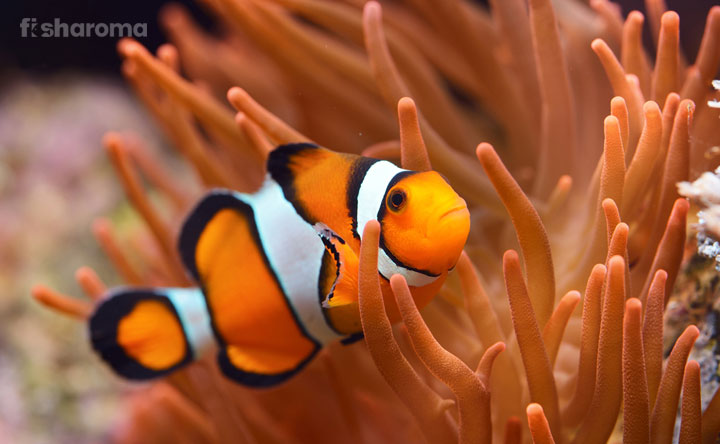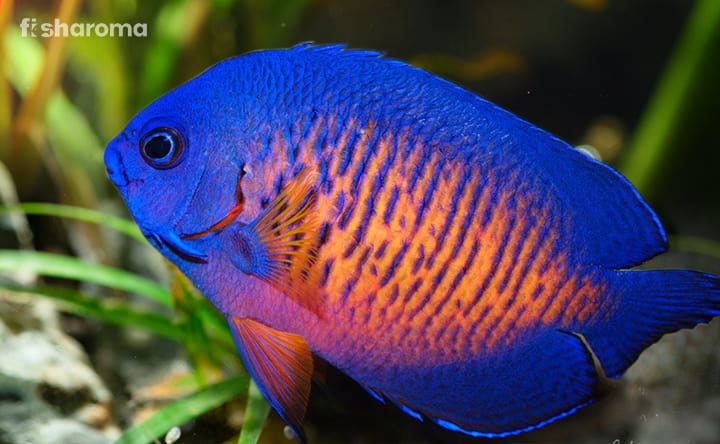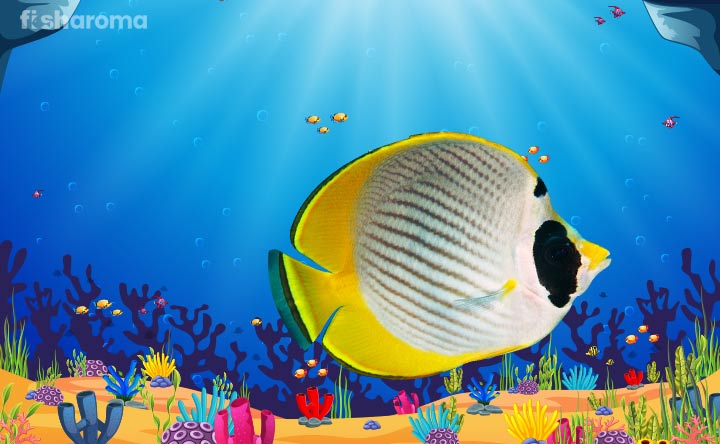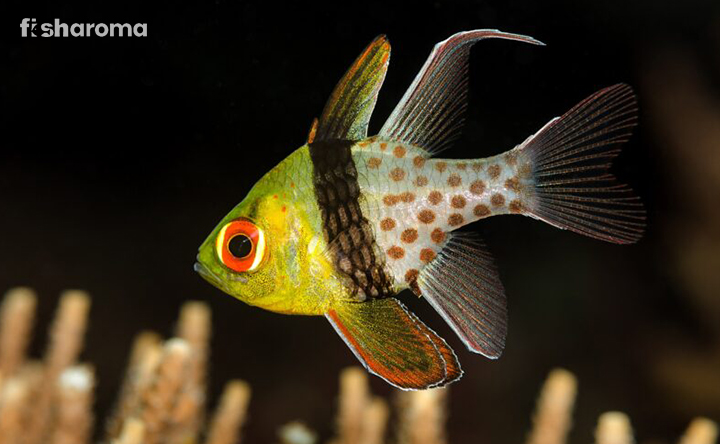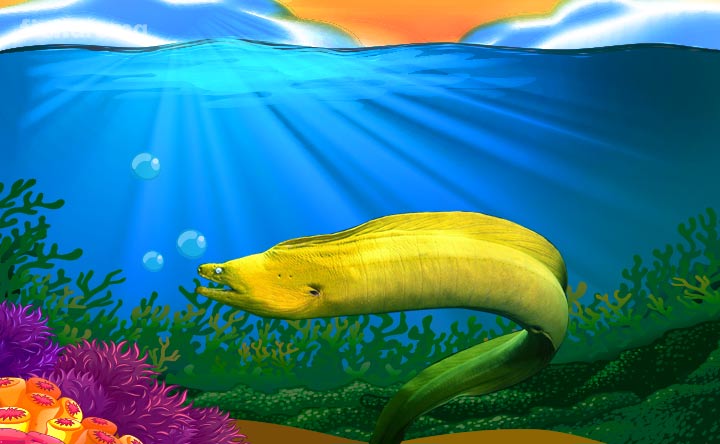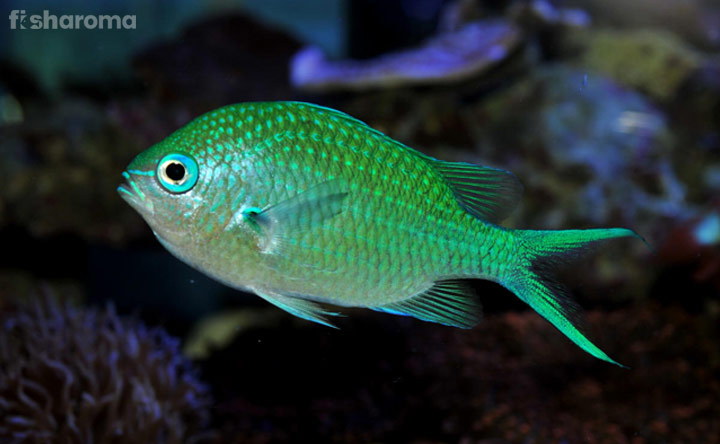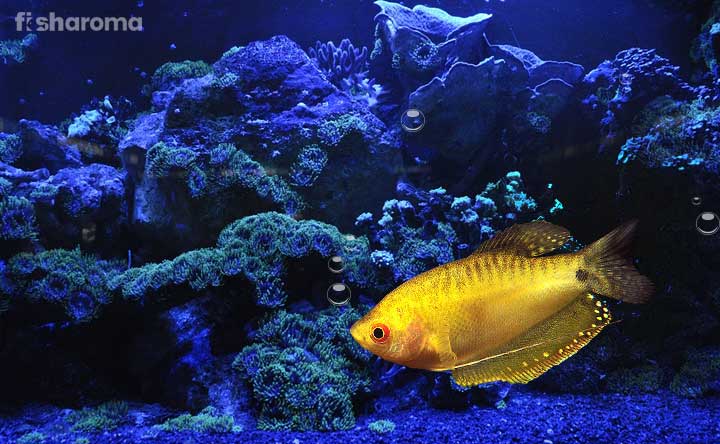6 Common Types of Parrotfish and their Fascinating Facts
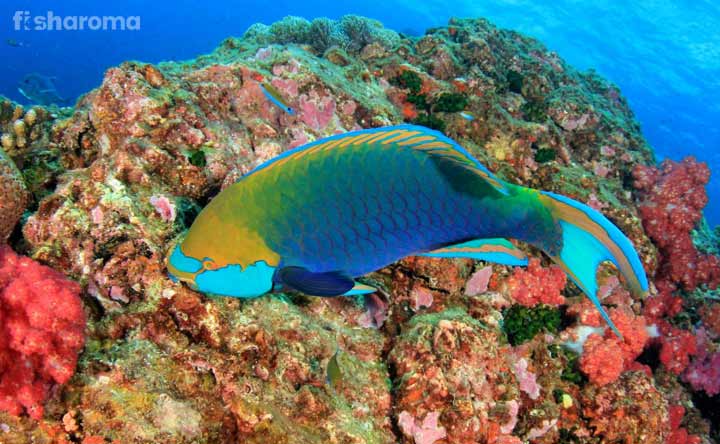
- Blue Parrotfish (Scarus Coeruleus)
- Humphead Parrotfish (Bolbometopon Muricatum)
- Rainbow Parrotfish (Scarus Guacamaia)
- Stoplight Parrotfish (Sparisoma Viride)
- Princess Parrotfish (Scarus Taeniopterus)
- Bloody Parrotfish (Hoplarchus Psittacus)
- How does Parrotfish Cleans the Corals and Reef
- How can Parrotfish Change their Sex
This fish has earned its name – Parrotfish for its grass-green color and fused teeth that just resemble the beak of a parrot. This set of teeth helps the species grind and eat foods and attack predators. Originated from the saltwater of the Caribbean Sea, Parrotfish belongs to the Scaridae family. This fish is one of the best tank cleaners because it consumes algae and dirt on the coral reefs. So, don’t you think you should include this fish in your aquarium family?
Usually, this small green fish dwells in the shallow water of ocean between the sea-grass beds, coral reefs, and rocky coasts. It ranges about 4-feet and its weight is about 45 lbs. Now, among 80 species of Parrotfish, let’s have a look at the details on some common species of Parrotfish:
Blue Parrotfish (Scarus coeruleus)

Quick Facts:
- Origin – Western Atlantic Ocean
- Lifespan – 7-10 years
- Size – 12-30”
- Diet – Omnivore
- Temperament – Aggressive
This blue-shaded fish has a light-yellow spot on its head, which starts fading with age. During the juvenile period, the body of this fish is bright purple-blue. Native to the Caribbean Sea and Western Atlantic Ocean, Blue Parrotfish loves dwelling in the reef environment. So, try to provide plenty of sea plants, corals, reefs and marine rocks in the aquarium when you are petting it.
You will find these fish breed eating small water species and algae on the corals, so they have a habit of eating algae in an aquarium also. Moreover, it is a hardy fish, so aquarists like petting this breed in both commercial places and residential places.
Humphead Parrotfish (Bolbometopon muricatum)

Quick Facts:
- Origin – Red Sea, Pacific Ocean, Indian Ocean
- Lifespan – 40 years
- Size – 51”
- Diet – Herbivore
- Temperament – Aggressive
This is the largest species in the family of Parrotfish that weight up to 100 lbs. Humphead Parrotfish has a huge hump on the head with a brown and green body. There are about 4-5 vertical white bands on the entire body of this fish. After this fish becomes mature, the body of the fish becomes pinkish-yellow, bluish-grey and bluish-green.
This fish is prone to several diseases like a fungal infection, fin rot, etc. So, try to keep the tank of Humphead Parrotfish clean to keep the fish away from severe illnesses and infections.
Rainbow Parrotfish (Scarus guacamaia)

Quick Facts:
- Origin – Atlantic Ocean
- Lifespan – 10-16 years
- Size – 47”
- Diet – Herbivore
- Temperament – Semi-Aggressive
This rainbow-shaded fish has various patterns in its body and it can reach up to 47”. The appearance of this fish is quite attractive because of the rounded-shape body and vibrant colors. But you will need a large tank to keep this 45 lbs. Rainbow Parrotfish.
This fish has orange fins and a green-brown body. Moreover, the sharp dental plates of this fish are olive green in color. You cannot understand the difference between the male and the female fish of this breed because both look similar to each other. The population of this fish has come down in recent times due to high human consumption.
Stoplight Parrotfish (Sparisoma viride)

Quick Facts:
- Origin – Caribbean Sea
- Lifespan – 10 years
- Size – 12-18”
- Diet – Herbivore
- Temperament – Semi-Aggressive
Usually, this fish is found in the marine water of the Caribbean Sea, Florida, Bermuda, Brazil and the Gulf of Mexico. They are white and red in the juvenile period but when they grow adult, they rapidly change their shades from the inner part of the body. There is a yellow spot near the pectoral fins of Stoplight Parrotfish that is visible once the fish gets completely matured.
This fish is comfortable to live in both shallow water and running water of the deep ocean. So, whether you are a beginner or an expert aquarist, you can keep this fish in your aquarium because it is hardy in nature.
Princess Parrotfish (Scarus taeniopterus)

Quick Facts:
- Origin – Caribbean Sea
- Lifespan – 8-10 years
- Size – 13.8”
- Diet – Omnivore
- Temperament – Peaceful
Generally, you will find this fish in a group at the rocky reefs behind the corals. This is a diurnal species, so it is active during the day and takes rest at night. If you keep this fish in your tank then it will eat the dead leaves of the plants also. So, this is one of the best tank cleaners and perfect water species for your aquarium.
Bloody Parrotfish (Hoplarchus psittacus)

Quick Facts:
- Origin – South America
- Lifespan – 15 years
- Size – 10”
- Diet – Omnivore
- Temperament – Peaceful
Their looks are similar to a round-shaped balloon, and they have a small and cute mouth. They are a shy and passive-natured species. These fish are found in various colors like red, orange, pink, blue, purple and other colors. There is a jelly-like flesh on the upper part of the head, so it is also known as Jellybean Parrot.
You can easily keep this breed in your aquarium because it is hardy and peaceful. If you decorate the tank with lots of rock formations, reefs and caves then Bloody Parrotfish will be comfortable to dwell in such an ambiance. Also, try to keep some water plants because this fish loves greenery and the natural environment.
How does Parrotfish Clean the Corals and Reef
There is a high benefit of keeping Parrotfish in a tank because it consumes algae and the dirt particles from the tank. Moreover, this amazing fish protects corals and oysters in that area where it lives.
After the removal of the algae from the corals, the corals and oysters grow freely. So, if you are setting a fish tank, you can keep Parrotfish in the tank to keep the ambiance clean and hygienic.
How can Parrotfish Change their Sex
Globally, there are some species which can change its sex, including Parrotfish, that can change its sex in its adulthood.
This fish has one of the best reproductive systems in the world which helps it in changing its sex. Fish breeds which are born as a male can change themselves to female, and female can change themselves to male when they turn adult. Some don’t change their sex for the entire livelihood, and others change it once they grow adult.
Fascinating Facts about Parrotfish
- Parrotfish use their Pharyngeal teeth to grind foods, and they can grind rocks also with their hard teeth which are more than a thousand.
- The white sand used in Hawaii is made after refining the poops of Parrotfish because it can produce more than 1000 lbs. sand.
- Parrotfish also belongs to the Cichlid family.
- This fish can cause Ciguatera Fish Poisoning, a toxic infection that can destroy other fishes. This poisoning is spread when the fish is unwell.
- Every night some Parrotfish excretes mucus with foul smell to keep their enemies away from them.
- Generally, Parrotfish is social and compatible with other water species, so you will not find it hard to choose its tankmates.
- About ten species of Parrotfish is added in the National Registry of Protection by the government of Mexico so that people stop consuming Parrotfish.
- Parrotfish makes a loud crunching noise while eating foods.
More Saltwater Fish for Aquarium
There are many saltwater fish that are amazing. If you want to know about them read the informative topics related to such species.
- Common Saltwater Fish for Beginners: There are various saltwater fish that are popular and among whom the details of 16 fish have been described here. Read on to find more.
- Pipefish: Originated from the saltwater of the Pacific Ocean, Garibaldi fish is one of the easy to care fish. Fish enthusiast likes to pet this fish because of its color and brightness. Before breeding, try to know the care guide of the fish.
- Royal Gramma: The other name of Royal Gramma is Gramma Loreto. This name is earned by the fish because of its bright purple color and royal appearance. To know the complete care guide of the fish you can look at this topic.


